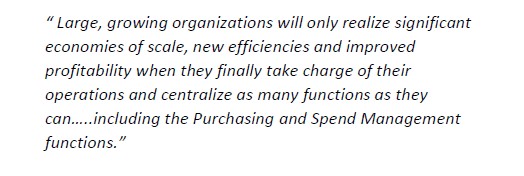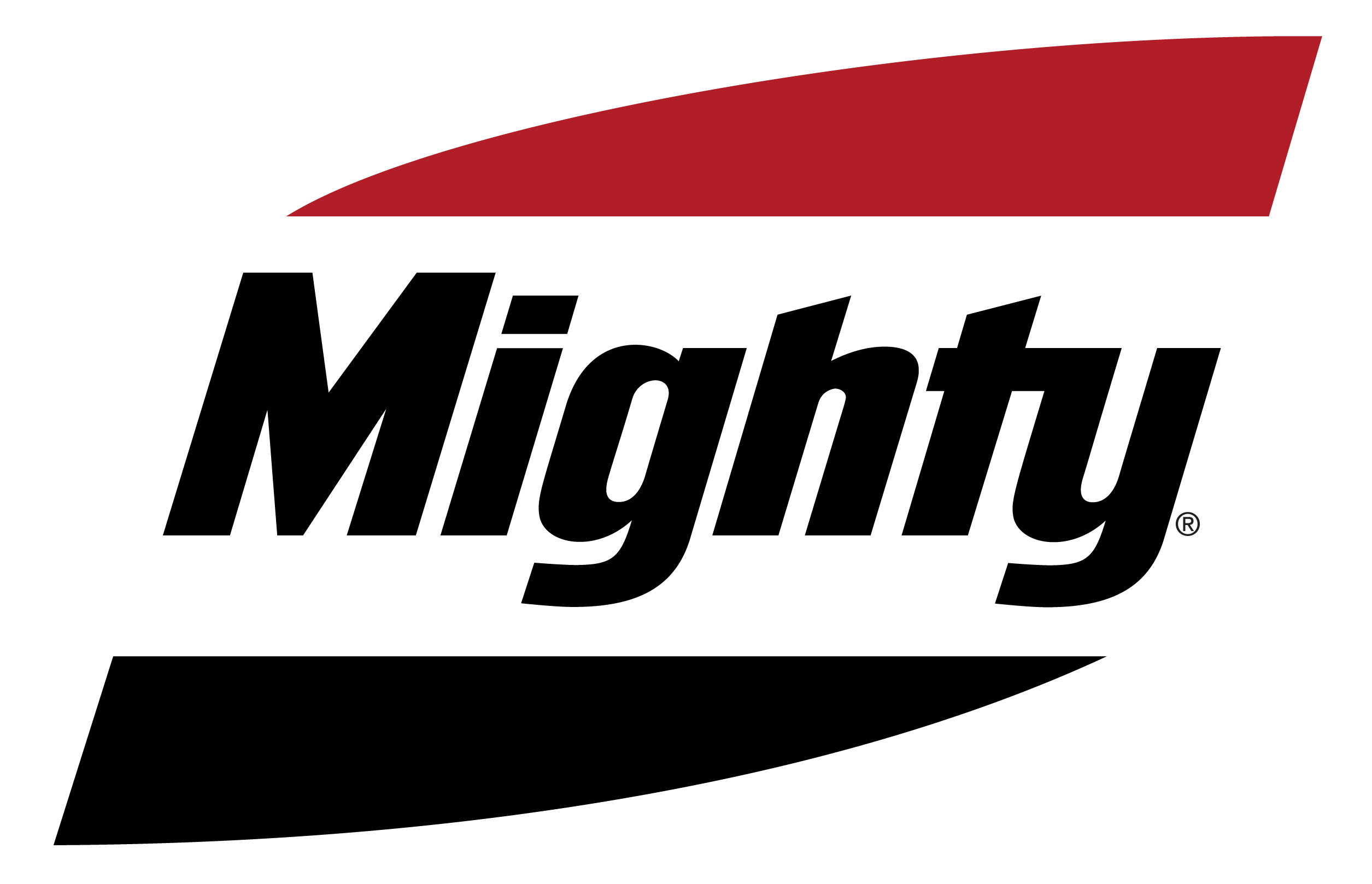Doug Austin, President of StrategicSource, provides several very compelling ideas to take control of your supply chain and reduce costs. Increasing profitability, leveraging purchasing power, and reducing administrative burdens are all benefits of adding Mighty distribution to your automotive business. Click here to contact us.
CREATING COST REDUCTIONS WITH CENTRALIZATION DURING THESE UNCERTAIN TIMES
Most organizations can realize the value of a high performing purchasing function now more than ever.
When sales are strong, we have the tendency of overlooking dollars laying on the floor of our businesses. We sometimes rationalize our decisions to not pursue obvious expense saving strategies to maintain cordial staff and business partner relationships, or to avoid stepping on someone’s toes by making a corporate decision.
Procurement research has said for years that the centralization of Purchasing activities can yield a 25% cost savings. We’ve seen these statistics corroborated over the years while performing our own purchasing and sourcing strategies. In 2019, our average sourcing savings increased to 29%, further validating the strategy of centralizing purchasing controls. Let’s view it another way, the cost of remaining decentralized is 25% of your annual spend. Can you afford to ignore that fact today, tomorrow, or next year?
Centralization of the Purchasing or Spend Management functions is essential to the realizing the financial benefits that come from scale and growth, and can protect your business in uncertain times.
A well organized and well led centralized Purchasing function can provide the following financial benefits to an organization:
- Shared Business Functions – Purchasing and payables functions from multiple locations can be centralized to one site.
- Staff Efficiencies – Fewer employees required to staff one location as opposed to multiple locations.
- Purchasing Leverage - Larger spend and greater purchasing leverage from a single corporate entity will get the attention of suppliers and should result in reduced prices and costs beyond what local purchasing groups can achieve.
- Specialization – A Larger organization allows for more specialization in staff and functions that will ultimately improve results and reduce risk. Buyers can specialize in vendors, supplies and services driving further benefits.
- Facility Consolidation – A consolidated space to house the centralized Purchasing organization creates efficiency in the utilization of staff, equipment, and supplier communications.
- Knowledge / Data – The consolidation of spend data provides awareness of accounts payable activities and inventories. This data prepares you to make informed decisions regarding supplier consolidation and the implementation of inventory controls.
- Cost Reductions – Lower supply and services costs will result in higher bottom-line profitability. Negotiated cost reductions should be quantified, projected, reported and audited so that executive management fully understands the contribution of the Purchasing function.
- Competitive Advantage – Implementing the actions listed above should provide a competitive advantage over smaller and less efficient competition.

Most large organizations realize the true value of having a highly performing Purchasing function. As previously mentioned, there is considerable Purchasing research that conveys the benefits of centralization and the expectation of significant cost reductions. Centralizing the Purchasing function can reduce supply and services costs by as much as 25% in most organizations. A well led and well-trained Purchasing group should bring the following benefits to both for-profit and non-profit organizations:
Organized Planning & Execution – A centralized Purchasing department will develop a methodical plan to address all expense categories over a prescribed period of time, providing confidence that all spend is being addressed.
Specialization – Centralized purchasing groups will usually organize their staff around products, supplies and services, creating a specific expertise that cannot be easily replicated in a decentralized group and thereby improving results.
Supplier vetting – Centralized Purchasing groups will typically have a robust process to ensure that suppliers are sourced to determine interest, capabilities, competitiveness and financial strength. This process should eliminate poorly qualified suppliers that can cause problems down the road.
Supply Base rationalization – Purchasing groups understand that a narrow supply base in each expense category will enhance organizational efficiency. Fewer suppliers help to keep costs to a minimum, increases leverage and minimizes the number of suppliers that are maintained in the accounts payable system.
Requirements gathering – Experienced Purchasing groups will work with the internal customer to define customer requirements. Highly functioning Purchasing groups will also challenge business requirements and suggest options based on their experience. They also know that the “internal customer” always has the final say.
Least total cost approach – Purchasing groups understand that price is but one factor in the overall value equation of any purchase. Pricing, quality, service level, inventory position, payment terms, discount terms, volume rebates, etc., among other requirements are also quoted. This data is then compared in RFQ’s among interested and qualified suppliers to arrive at the least total cost.
Process Focus – Every purchase, whether a supply or a service has either an efficient or inefficient process associated with it. Effective Purchasing groups will define the most efficient acquisition, operational and payment processes for each purchase.
Risk Mitigation – Centralized purchasing policies, processes and controls provide the necessary guidance to management and employees in the acquisition of supplies and services. The organization of well-crafted purchasing policies will ultimately produce clear expectations and will ultimately reduce organizational risk.
Improved Profitability – Cost reductions generated by a productive Purchasing team will reduce costs, and those costs will drop to the bottom line as new profits.
Executive Leadership Imperative
Change is difficult, and it can be messy. Uncertain environments require leadership more than ever. Change will often result in more work and challenges for management to deal with. In the final analysis, executive management has a responsibility to provide leadership and drive the change that delivers the best returns on investment for the organization, and in some cases saves the organization to fight another day.
Realizing complete economies of scale across a growing organization can provide significant, sustainable profit improvement opportunities to an organization. The new profit opportunities that come from centralizing the Purchasing function can easily provide savings in the hundreds of thousands and even millions of dollars for organizations with revenues of $1B or more annually. Again, these savings fall to the bottom line as new profits.
If your organization has still not centralized the Spend Management or Purchasing function, now is the time to implement a plan for those changes. You probably have centralized departments for HR, IT and Marketing……Purchasing supplies and services will be around for as long as the business is open. Can you afford to treat this function as a “nuisance” that someone needs to address, or will you become strategic and realize the near term benefits and economies of scale that you originally intended? Is your leadership showing?
For more information on StrategicSource visit their website.
For more information about owning a Mighty Auto Franchise contact us today!

